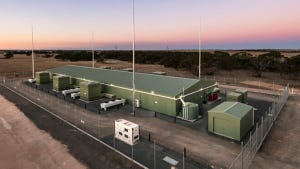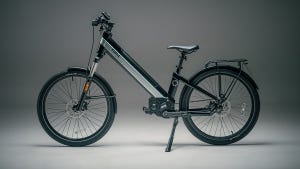Our First Drive in the Lucid Air EV
The Lucid Air luxury car looks astounding on paper. How about on the road?
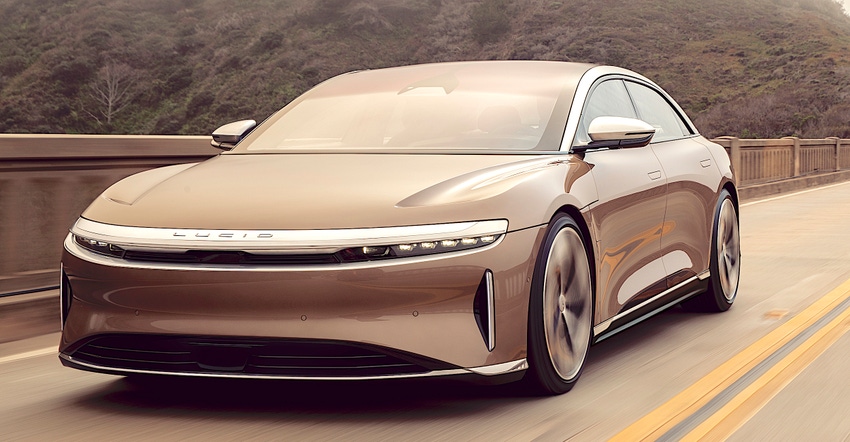
The Lucid Air represents an impressive advance in luxury electric vehicle design and technology, and the car delivers on the promise of its specification sheet and exciting styling with a driving experience that matches expectations. We had the opportunity for a brief test drive in the Air and came away with positive impressions, though we didn’t have the time to experience important factors such as the car’s driving range or charging speed.
If Tesla represented EV 1.0, then the Rivian RT1 we tested recently and the new Lucid Air represent EV 2.0, as they bring new ideas and fresh advances as the newest startups to deliver assembly line-built EVs to customers. The cars come from Lucid’s Casa Grande, Ariz. plant that we discussed in a previous article.
While Tesla seemingly aspired to follow Apple’s model of imbuing mass-market products with a cool aesthetic, Lucid seems cast more in the mold of Bang & Olufsen, with sleek design and thoughtful details that underline the Air’s position as a prestige product.
Lucid senior vice president of design Derek Jenkins didn’t just pen slippery-looking lines; the Air registered a production car record-low coefficient of drag of 0.208 at the Windshear rolling-road wind tunnel in North Carolina. “We are building the best car in the world and the numbers simply speak for themselves,” Jenkins crowed. “What’s more, we did all this without ever sacrificing the beauty of the Lucid Air, which will stand as the first example of a car being created from a ‘clean sheet’ to leverage the total design freedom that an EV architecture provides.”
Sliding behind the wheel reveals an opulent cabin, with gorgeous expanses of open-pore wood trim for the traditionalists and a gorgeous glossy 34-inch 5K curved Glass Cockpit instrument display for the gadget freaks. Overhead, the windshield stretches back to the front seat occupants’ heads, effectively merging it with a skylight in one piece with the sun visors and rear-view mirror mounted directly to the glass.
Both surfaces seem to invite the placing of hands, but the thought of fingerprints on the screen deters me from caressing the glass. The wood is warmer anyway! Lucid has avoided the trap of employing all virtual on-screen controls, so I appreciate the presence of the aluminum climate control toggles and a volume control roller wheel.
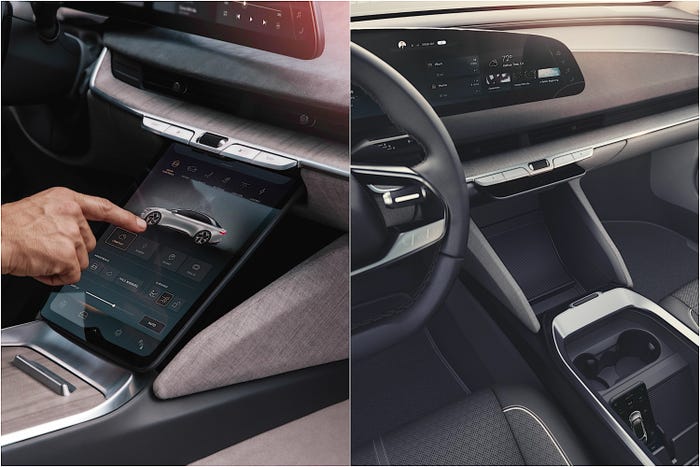
The iPad-like Pilot Panel in the Air’s center control stack provides touch screen control for more granular control of the car’s functions. Even better, the Pilot Panel has the good judgment to retire to its quarters on request, sliding up into the dashboard to relieve the Air’s occupants of screen fatigue.
An Amazon Alexa Built-In system lets the Air respond to voice controls that may let the Pilot Panel stay stowed, with navigation, phone calls, streaming media, smart home control, and more available through the Amazon voice control system.
The tested Dream Edition was finished with silvered Eucalyptus wood and Bridge of Weir Nappa-grain leather. Vegan non-leather upholstery is available on other trim levels.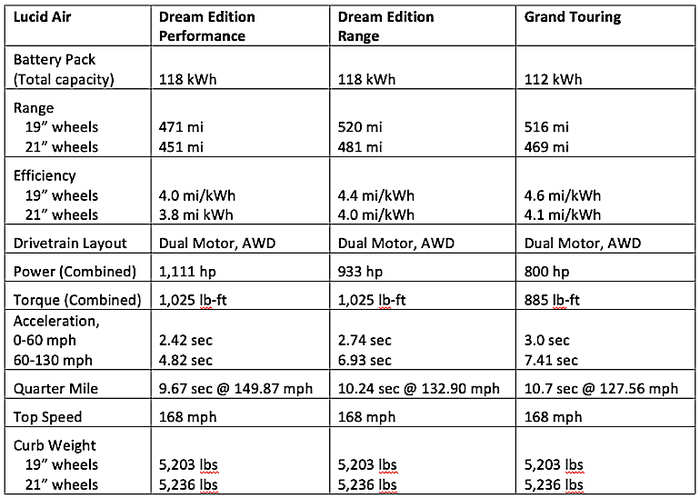
The Air starts automatically when the driver enters with the key fob, and it automatically turns off when they exit. You engage Drive or Reverse with a column-mounted stalk shifter that is similar in operation to the Mercedes-Benz-supplied device Tesla uses, but the Air’s shifter is Lucid’s own design.
Underway, the Air is both silent and swift in the way that only modern EVs can be. Rotate your right ankle and the Air surges forward with the muscle of 1,111 horses despite the bulk of 6,600 cylindrical battery cells in its 118-kilowatt-hour battery pack that bump the car’s curb weight to a chunky 5,236 lbs. The 2.42 seconds it takes the Air to reach 60 mph from a standstill is not, in fact, instantaneous, but you’d be hard-pressed to convince anyone aboard otherwise.
The Air has monstrous brakes to match its mass and speed potential, even though most of the stopping will normally be done by the car’s electric motors working in regeneration mode. Steering is predictably light and no one will mistake the car’s feel for that of, say, a Mazda MX-5 Miata, but buyers of posh EVs don’t likely want to feel every pebble on the road through the steering wheel.
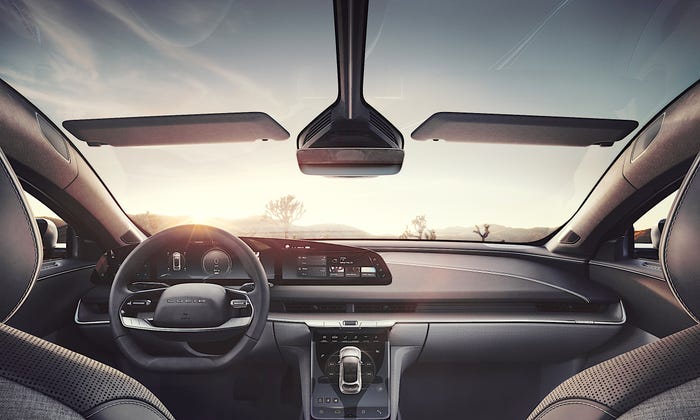
The Air employs aggressive regeneration when the driver lifts off the accelerator, and the exact degree of regen is driver-selectable so the car can be easily tuned to the one-pedal drive level the driver prefers. While hustling the car through curves, however, it revealed that the switch between lift-throttle regeneration braking and the extra force applied when the driver toes the brake pedal could still use some refinement.
Our test car was a pre-production prototype, and like all cars of this sort, the Air supports over-the-air software updates that let the software get better over time, so this is something that might already be improved in the production models. If not, it is something they can still tweak. When I drove the Air, this was a detail where the BMW i4 and Rivian RT1 that I’ve tested recently were better.
A visit to the Air’s back seat revealed ample leg and headroom and the glass skylight ensures a well-lit atmosphere. The serene ride and hushed drivetrain ensure that back-seaters will enjoy as comfortable a trip as possible, even if the Air stretches its battery range all the way to the maximum of 520 miles in the Air Range model.
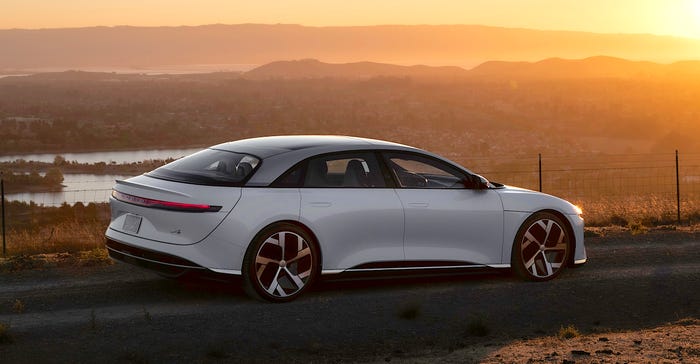
With the accelerating flood of sophisticated EVs arriving from startups like Lucid and Rivian as well as legacy carmakers like GMC and BMW, it will be interesting to monitor the ever-evolving state of the art. Motor Trend thinks that the Air is the current leading edge, judging from the magazine’s decision to name the Air the Motor Trend Car of the Year.
About the Author(s)
You May Also Like


